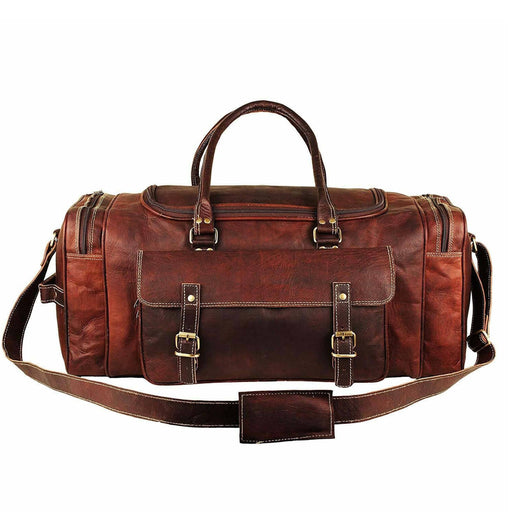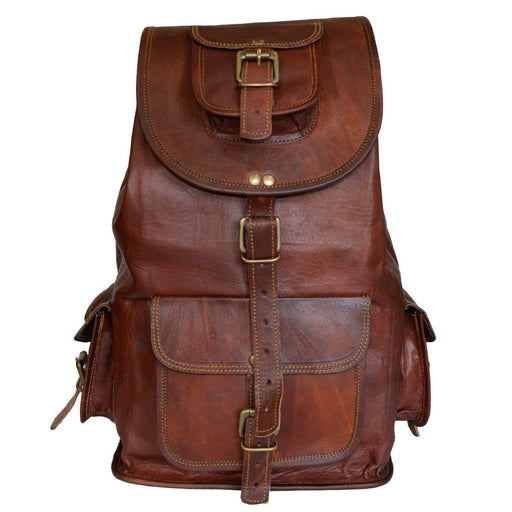
The Process of Leather Making
The extensive procedure of leather tanning is undoubtedly complicated and time-consuming. It requires skilled labour and excellent mechanisation. Even with the advent of top-notch machinery, leather manufacturing has become less labour-intensive. The complex series of treatments requires considerable time and energy. The purpose of the tanning process is to bring about alterations in the protein structure of the animal skin in order to make it more sustainable and durable, as well as improve its texture and overall appeal. There are variegated varieties of existing leather on the market that are broadly categorised into full-grain leather, top-grain leather, split leather, and bonded leather. All types of leather have to go through four major stages. This incorporates preparatory steps such as tanning, re-tanning, and finishing. At times, an extra process, i.e., a sub-process of surface coating, is added to the leather manufacturing procedure. Before transferring it to the tannery, the animal skin needs to be treated properly.

Although curing is not considered a part of the tanning process, it is an integral step in obtaining leather. The animal is killed and skinned before the natural warmth of the body leaves the tissues. The freshly removed skin or hide is immediately cured with salt to get rid of the water. The skin is allowed to remain in the shade until it is completely dry. The cured skin or animal hide is then transported to the tanneries for the next steps in processing.
Here’s a list of the four major steps involved in tanning leather:

Preparatory Steps
There are numerous preparatory steps after the curing of leather, and all of them may or may not be followed by all the tanneries. It all depends on the quality and nature of the animal skin.
1) The very first process is soaking, in which the hide is soaked in water for an elongated period of time. This may stretch from hours to days. This step restores the moisture lost during salting and removes dirt, debris, blood, and fats.
2) In the second step of fleshing, subcutaneous stuff from the flesh side is extracted. It is passed through a machine to remove the fat, muscle, and flesh mechanically. Hides are split into different layers after this stage.
3) Rollers and blades are used to remove hair at the third stage of dehairing.
4) The fourth process involves cleaning and soaking the animal hide in acids or salts to prevent decomposition. It helps the penetration of tanning agents such as chromium and aldehydes. This is called pickling.
5) Next, the hide is dipped in sulfuric acid for long hours to lower the pH after pickling.
6) Liming loosens the fibres and helps the tanning chemicals get absorbed.
7) De-liming is performed after limeing, which includes washing the hide with a mixture of water and ammonium chloride or ammonium sulphate.
8) Bating signifies the end of the liming process. The skin is treated with enzymes to remove non-fibrous proteins, thus making the skin smooth and silky.
9) Water-based solutions and solvents are used to remove excess grease or natural fatty acids from the skin in the second-last step.
10) Finally, chemical agents are used to make the hide colourless, which would help in adding the desired shade at a later stage. This process is known as bleaching.
Tanning
The purpose of tanning is to produce a non-decomposable and durable material from the raw animal hide called leather. Tanning alters the protein of the rawhide into a long-lasting material. The most common tanning processes include mineral tanning, vegetable tanning, aldehyde tanning, and oil tanning.

Tannins extracted from bark, leaves, and branches of trees such as oak, chestnut, or mimosa are used for vegetable tanning, unlike mineral or chrome tanning, where chemicals like chromium sulphate are used for tanning. On the one hand, natural tannins make the tanning process slow and laborious but environmentally friendly; on the other hand, chrome tanning harms the environment with its chemicals but is less time-consuming. Thus, the latter is a cheaper procedure. The aldehyde-tanned leather, which uses glutaraldehyde or oxazolidine compounds, is water-absorbent, soft, and can be machine washed. thus ideal for use in chamois. At times, emulsified oils are blended with aldehyde chemicals to produce exceptionally soft and flexible leather, a process called oil tanning.
Re-Tanning
This process converts the tanned leather into finished leather, which can be used for manufacturing leather products. The choice of chemicals used in this process depends on the final colour and texture required in the final product.
Re-tanning includes the drying of tanned leather pressed between two rolling cylinders to remove the absorbed water. The next process removes the left-over flesh and creates uniformly thick leather. Then the splitting machine chips off the thick leather into one or more layers. Sometimes, this process is also carried out after liming. Except for vegetable-tanned leather, all types of leather are dyed. Most water-soluble dyes are used, allowing the dye molecules to penetrate inside the fibres. Therefore, it differs significantly from surface coating, where dye is applied only to the top layer. Fat liquoring is the last stage in re-tanning where fats, oils, or waxes are stuffed between fibres to keep the leather soft and malleable. The leather will dry and become stiff if this is not carried out.
Finishing
This is the last major stage in which finishing touches are added to the tanned leather according to the required end product. This includes colour, texture, thickness, and surface patterns. At first, the leather is polished by rubbing it with a velvet wheel and embossed using heated hydraulic or roller presses. As per the requirement, resins, pigments, and dyes are added in layers to the surface using spraying, roller coating, curtain coating, or hand coating to add the desired colour. Finally, the leather is graded before being dispatched to the clients.
Check out our leather bags, which are handcrafted entirely from genuine leather.
Leather Bags for Men
Walker Leather Office Travel Bag
The super-stylish Walker leather unisex duffle bag is undoubtedly a trendsetter all year. This opulent, oblong weekender bag is made...
View full detailsTraveler Weekender Duffle Bag
This is the perfect solution for all your needs. This leather duffle bag has four big pockets on the exterior with two buckles. This...
View full detailsSpencer Hiking Backpack
The Spencer Leather Backpack is the perfect bag for all your adventures because it is designed to hold everything you need for a trip. Wit...
View full detailsWindsor Crossbody Bag
This unique brown leather crossbody bag for men and women will make every outfit of yours stand out effortlessly. This sling bag is handcrafted by ...
View full detailsCambridge Leather Satchel Bag
This handcrafted Cambridge Leather Satchel Bag is an exclusive product of MaheTri's Satchels collection for men and women. At MaheTri's leather ...
View full details




